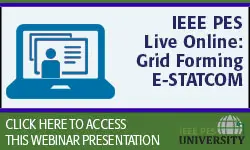Load-Altering Attacks Against Power Grids Under COVID-19 Low-Inertia Conditions
Subhash Lakshminarayana, Juan Ospina, and Charalambos Konstantinou
-
Members: FreePES
IEEE Members: Free
Non-members: FreePages/Slides: 15
03 Mar 2022
The COVID-19 pandemic has impacted our society by forcing shutdowns and shifting the way people interacted worldwide. In relation to the impacts on the electric grid, it created a significant decrease in energy demands across the globe. Recent studies have shown that the low demand conditions caused by COVID-19 lockdowns combined with large renewable generation have resulted in extremely low-inertia grid conditions. In this work, we examine how an attacker could exploit these scenarios to cause unsafe grid operating conditions by executing load-altering attacks (LAAs) targeted at compromising hundreds of thousands of IoT-connected high-wattage loads in low-inertia power systems. Our study focuses on analyzing the impact of the COVID-19 mitigation measures on U.S. regional transmission operators (RTOs), formulating a plausible and realistic least-effort LAA targeted at transmission systems with low-inertia conditions, and evaluating the probability of these large-scale LAAs. Theoretical and simulation results are presented based on the WSCC 9-bus and IEEE 118-bus test systems. Results demonstrate how adversaries could provoke major frequency disturbances by targeting vulnerable load buses in low-inertia systems and offer insights into how the temporal fluctuations of renewable energy sources, considering generation scheduling, impact the grid's vulnerability to LAAs.


